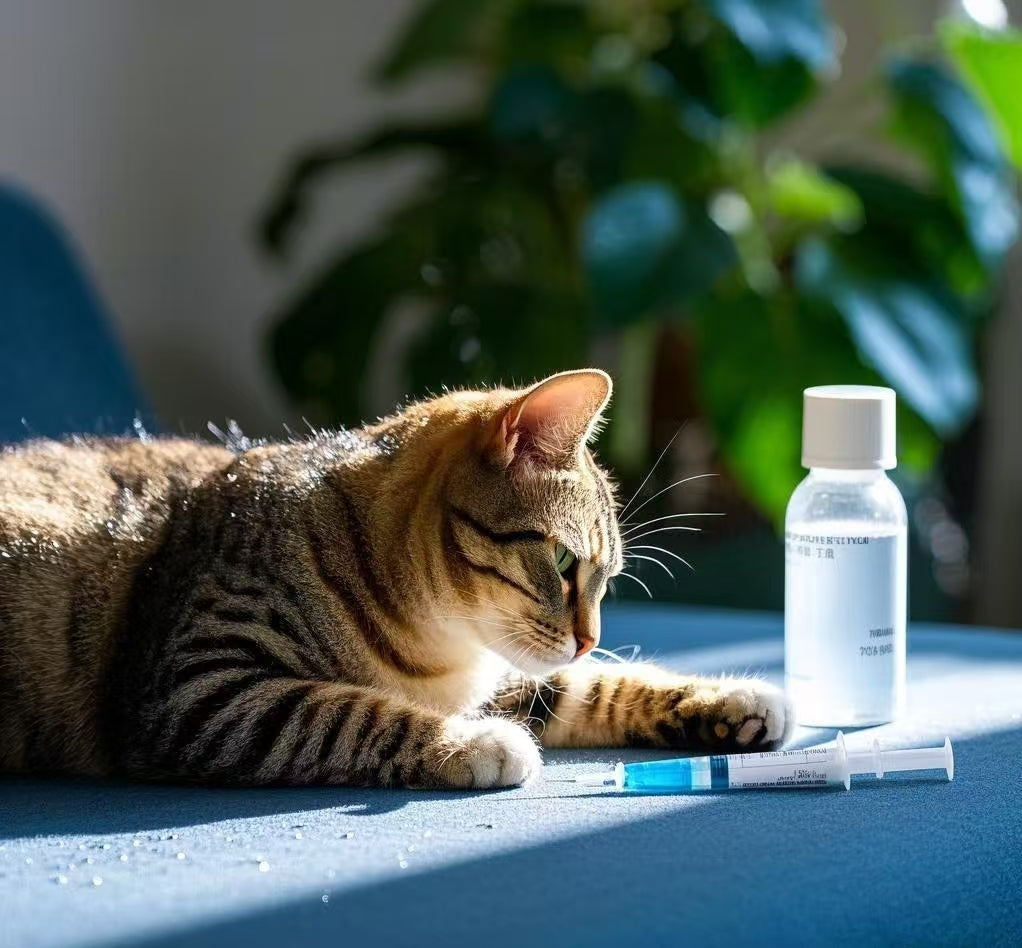Feline viral rhinotracheitis
This disease is an acute, highly contagious upper respiratory tract disease caused by feline rhinotracheitis virus (type I) of the herpesviridae family. It mainly affects kittens, with an incidence rate of up to 100% and a mortality rate of about 50%.
This virus spreads rapidly mainly through contact or droplet infection. Cats that have recovered naturally or been artificially vaccinated can carry and shed the virus for a long time, becoming a dangerous source of infection.
[Main Symptoms] The incubation period is 2 to 5 days, and kittens are more susceptible than adult cats and the symptoms are more severe. Fever at the beginning of the disease, not eating, eye and nose secretions initially sticky, then mucopurulent, explosive sneezing, coughing, tearing, increased nasal secretions, anorexia, weight loss, depression, cat disease Corneal dendritic congestion and conjunctival edema can be seen. The mortality rate of kittens is high. Some cats can become chronic, with persistent coughing, difficulty breathing, and sinusitis, ulcerative keratitis, and panphthalmitis. When the infection is limited to the upper respiratory tract, it is generally called viral rhinotracheitis.
Pathological changes are mainly manifested in the upper respiratory tract, causing conjunctivitis, rhinitis, ulcerative glossitis and tracheitis. If the virus is deposited in the lungs, it can cause interstitial pneumonia. The nasal cavity and turbinate mucosa were diffusely congested and swollen, covered with a layer of exudate. Similar lesions were found in the larynx and trachea, and the bronchial lymph nodes were slightly swollen. In severe cases, the nasal and turbinate bone mucosal necrosis occurs, and focal necrosis occurs in the mucosal epithelium of the conjunctiva, tonsils, epiglottis cartilage, larynx, trachea, bronchi, and even bronchioles. A large number of eosinophilic intranuclear inclusions can be seen in the epithelium in the necrotic area, sometimes in the Inclusion bodies can also be seen in the epithelium of the necrotic area of the tongue (which can be used as a basis for diagnosis). Due to secondary infection, naturally
Pneumonic lesions may also occur in cases.
[Treatment] There is currently a lack of widely used anti-feline rhinotracheitis virus drugs. It has been reported that 5-carbon deoxyuracil core can be used to treat ulcerative keratitis caused by feline rhinotracheitis virus infection. Certain synthetic nucleoside drugs have anti-herpes virus infection effects. Benzylpenicillin can be used for symptomatic treatment, and inhalation therapy often allows the affected cat to have a sense of smell and eat food. It can also be supplemented with traditional Chinese medicine. Use 5g each of skullcap, platycodon, and pinellia ternata, 3g each of perilla, almond, and mint. Add 500ml of water, fry to 50m1, and give it three times by gavage. Every 4 to 6 hours. Or 10g each of Gangbangui, fried coral (whole fried), and Daqingye. Add 500ml of water, fry until it reaches 50ml, and take it in 2 times. You can also use 2.5g of Forsythia suspensa, 2.0g of skullcap, 2.0g of gardenia, 2.0g of Bupleurum, 1.5g of honeysuckle, 1.0g of Fangfeng. 2.0g of green box, 2.0g of Codonopsis pilosula, 2.0g of Astragalus, 1.5g of Schisandra chinensis, 1.5g of Plantago chinensis. g (fried bag), 1.0g of licorice, decoct into about 30ml. 15ml each time, 2 times a day, for 3 days. Function: Relieves the appearance and relieves the lungs, clears away heat and clears the orifices.
[Prevention] At present, there are attenuated vaccines for feline rhinotracheitis abroad that can be used to prevent this disease. The vaccine has a good preventive effect when used alone or in combination with the attenuated feline circovirus vaccine. It is also sometimes used in combination with feline panleukopenia and feline pneumonia (caused by chlamydia) vaccines. Hyperimmune serum can be used for emergency prevention. This disease can be prevented by intranasal or parenteral vaccination with a live attenuated feline herpes virus vaccine, which should be administered at least twice a year.

